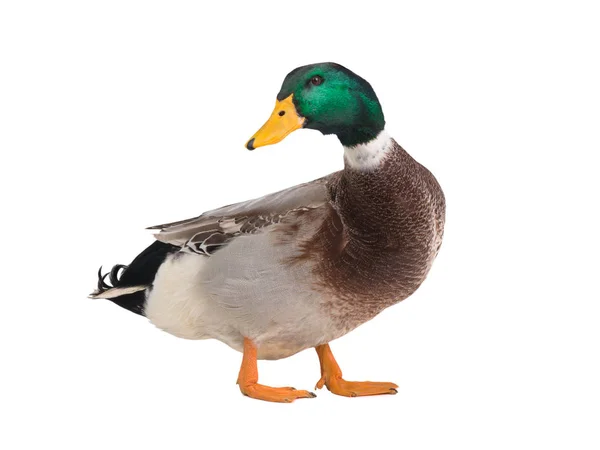mallard or wild duck (Anas platyrhynchos) are a fascinating group of birds that inhabit various ecosystems around the world. They are known for their adaptability, migratory behavior, and importance in maintaining ecological balance. However, many people wonder, "Is the wild duck a protected species?" This article explores the conservation status of wild ducks, the factors influencing their protection, and the measures taken to preserve their populations.

The conservation status of wild ducks varies significantly depending on the species. While some species of wild ducks are abundant and widespread, others are at risk due to habitat loss, hunting pressures, and climate change. Wild ducks are not universally protected, but several species are listed under various conservation statuses, including "vulnerable," "endangered," or "critically endangered." To understand whether wild ducks are protected, it's crucial to look at individual species and their conservation designations.
Some species of wild ducks are considered endangered or threatened, and these species are given protection under national and international laws. These ducks may be subject to stricter hunting regulations, habitat conservation efforts, and legal protections to prevent population decline. Examples of wild ducks that are under protection include:
The Californian Condor (Anas crecca): Listed as endangered, this small duck species faces significant threats from habitat destruction and climate change.
The Baikal Teal (Anas formosa): Endemic to Eastern Russia and parts of China, the Baikal Teal is considered at risk due to habitat degradation.
The Madagascar Pochard (Aythya innotata): One of the rarest ducks in the world, the Madagascar Pochard was once thought to be extinct, but efforts to conserve it have helped re-establish its population.
On the other hand, many species of wild ducks, such as the mallard duck (Anas platyrhynchos), have stable populations and are not classified as protected. These species are not currently at risk and are commonly found in various habitats, including lakes, rivers, and wetlands around the world. However, even these species can face localized threats due to factors like pollution, habitat destruction, and overhunting in certain areas.
The protection of wild duck species depends on several factors, including population numbers, habitat quality, and human impact. Species that are more susceptible to environmental changes or human interference are often placed under protection. Factors contributing to the need for protection include:
Habitat Loss: Wetland drainage, urban expansion, and agriculture can destroy critical breeding and feeding areas for ducks. Habitat loss is a primary driver behind the decline of many wild duck species.
Hunting Pressures: While hunting of certain wild ducks is legal in many countries, excessive hunting or illegal poaching can significantly reduce populations. Stricter hunting regulations are often implemented for endangered or vulnerable species.
Climate Change: Changes in weather patterns and rising sea levels can disrupt migration routes, breeding cycles, and food availability, negatively affecting wild duck populations.
Various international agreements and conservation organizations focus on protecting wild ducks and other waterfowl. Some notable efforts include:
The Migratory Bird Treaty Act (MBTA): In the United States, this federal law provides protection for migratory birds, including many species of wild ducks. Under the MBTA, hunting and killing migratory birds is prohibited without a permit.
Convention on Migratory Species (CMS): An international treaty that aims to conserve migratory species across national borders. Many wild duck species are protected under this convention, which facilitates cooperation between countries to conserve migratory birds.
World Wildlife Fund (WWF): The WWF works globally to protect vulnerable species of wild ducks, particularly those at risk due to habitat loss and climate change.
Protection efforts for wild ducks vary depending on their conservation status and the threats they face. Key conservation strategies for wild ducks include:
Protecting and restoring wetland habitats is a critical aspect of wild duck conservation. Organizations and governments are working to preserve key habitats where ducks breed, nest, and feed. These efforts often include:
Restoring degraded wetlands
Implementing zoning laws to prevent development near critical habitats
Creating protected areas where hunting is restricted
For species of wild ducks that are not under immediate threat, hunting is often regulated to ensure sustainable populations. Hunters are required to follow specific hunting seasons, bag limits, and other restrictions to prevent overhunting. However, for endangered or threatened species, hunting is often prohibited altogether.
In extreme cases, such as with the Madagascar Pochard, captive breeding and reintroduction programs are used to rebuild populations. These programs involve breeding ducks in controlled environments and releasing them back into the wild once their numbers are sufficient to ensure survival.
| Species | Conservation Status | Region of Habitat | Key Threats |
|---|---|---|---|
| California Condor | Endangered | North America | Habitat destruction, climate change, hunting pressures |
| Baikal Teal | Vulnerable | Eastern Russia, China | Habitat loss, hunting pressures |
| Madagascar Pochard | Critically Endangered | Madagascar | Habitat degradation, low population numbers |
| Mallard Duck | Least Concern | Worldwide | Localized habitat destruction, hunting pressures |
| Northern Pintail | Least Concern | North America, Europe, Asia | Habitat loss, climate change |
This table summarizes the conservation status and key threats of selected wild duck species, highlighting the diverse range of protection statuses across different species. Understanding these details is vital for ensuring that appropriate conservation measures are applied to each species.
The protection of wild ducks depends largely on the species in question. While some species of wild ducks are protected due to their endangered status or the threats they face, others have stable populations and are not subject to the same level of protection. Conservation efforts, including habitat preservation, hunting regulations, and international agreements, are crucial in ensuring the survival of vulnerable wild duck species. Understanding the specific needs and threats facing different species is key to determining the level of protection required
animal tags: Anatidae
We created this article in conjunction with AI technology, then made sure it was fact-checked and edited by a Animals Top editor.